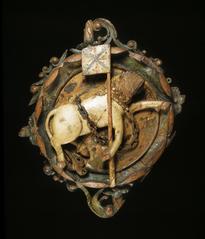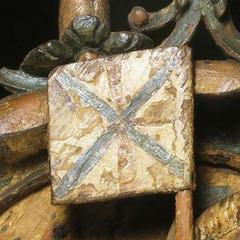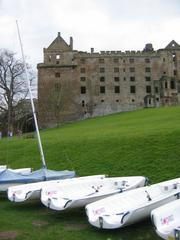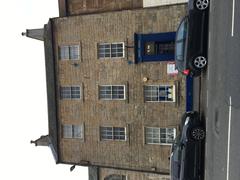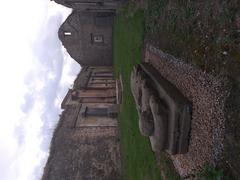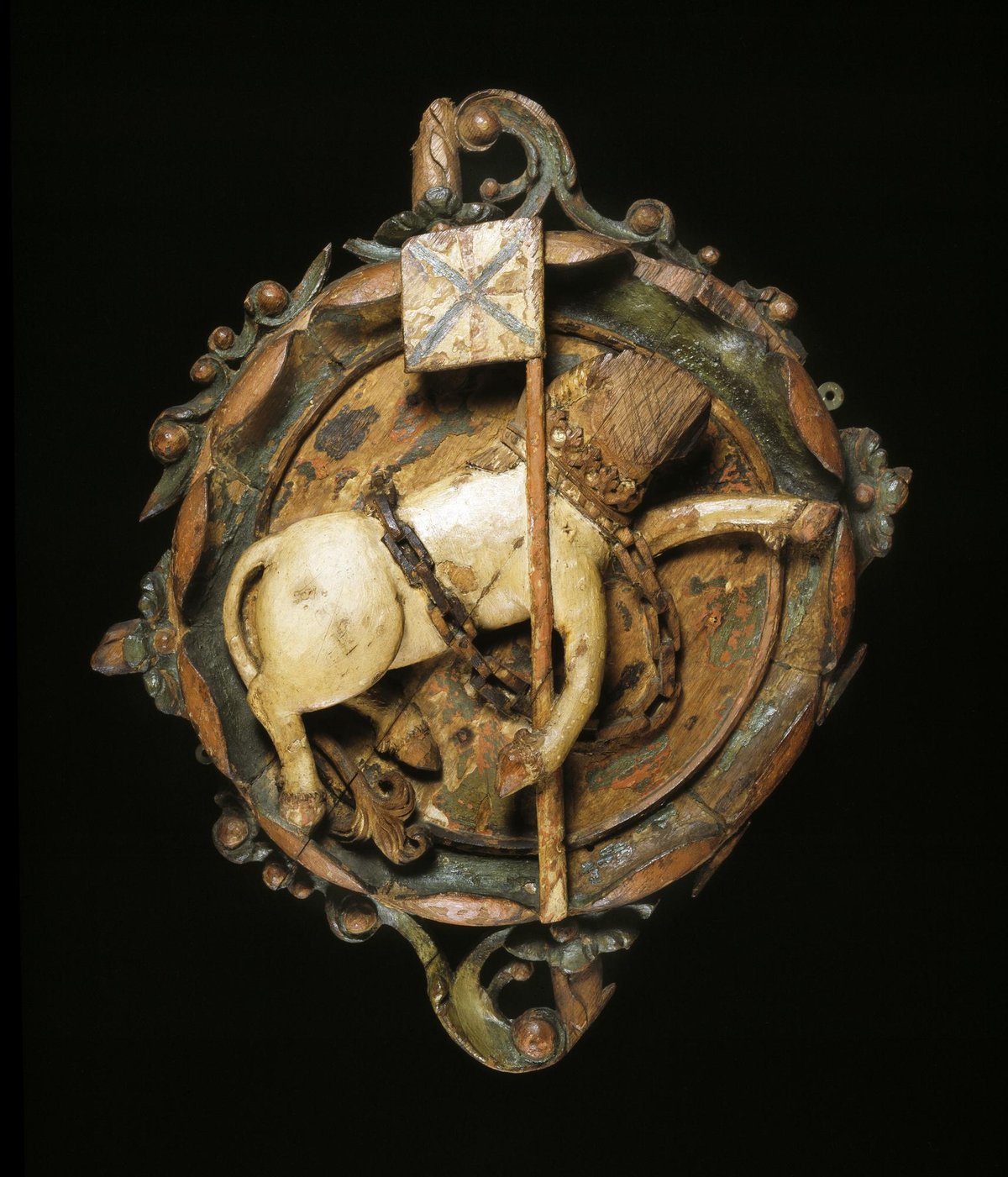
Linlithgow Palace: Visiting Hours, Tickets, and Historical Site Guide – Livingston, United Kingdom
Date: 14/06/2025
Introduction: Linlithgow Palace’s History and Cultural Significance
Situated on the shore of Linlithgow Loch in West Lothian, Scotland, Linlithgow Palace is one of the country’s most evocative historic landmarks. Once a beloved royal residence of the Stewart dynasty and the birthplace of Mary, Queen of Scots, the palace embodies centuries of Scottish history, royal intrigue, and Renaissance splendor. Its roots extend to the 12th century, when King David I established a royal manor here, but the site’s importance grew through the medieval period, marked by strategic significance and dramatic conflicts (Historic Environment Scotland; Visit West Lothian).
Today, Linlithgow Palace stands as a magnificent ruin, renowned for its architectural innovation, its striking quadrangular design, and ornate Renaissance fountain. It also serves as a vibrant cultural venue, hosting events like the annual Spectacular Jousting tournament. Visitors can traverse the haunting ruins, stroll around Linlithgow Loch and the Peel parklands, and immerse themselves in stories of Scotland’s royal past through guided tours and educational programs (Lost in Landmarks; Dreaming of Butterflies).
This detailed guide covers Linlithgow Palace’s history, architectural highlights, visitor information—including opening hours and ticketing—accessibility, travel tips, nearby attractions, and frequently asked questions. Whether you’re a history lover or a family traveler, Linlithgow Palace offers an unforgettable journey into Scotland’s royal heritage.
Historical Overview
Early Origins and Strategic Foundations
The site of Linlithgow Palace has been of strategic importance since Roman times, but its significance as a royal residence began with King David I in the 12th century. The name “Linlithgow” is believed to derive from Brittonic roots, meaning “the loch in the damp hollow,” a nod to its picturesque setting (Visitors Guide to Scotland). Its location between Edinburgh and Stirling was vital for royal travel and military oversight (Factsgem).
English Occupation and the Pele
The palace’s history was shaped by conflict. During Edward I of England’s invasion in 1296, he constructed a defensive “pele” (timber palisade) around the royal manor. The original structure was destroyed by fire in 1424, a common fate during Scotland’s medieval turmoil (Tudor Times).
Stewart Dynasty: The Pleasure Palace
The Stewart monarchs transformed Linlithgow from a fortress to a Renaissance palace:
- James I (early 15th century): Initiated the reconstruction after the 1424 fire, creating an opulent residence (Tudor Times).
- James IV and James V: Enhanced the palace’s grandeur, adding the Great Hall, royal apartments, and the stunning three-tiered courtyard fountain, which reputedly flowed with wine on special occasions (Lost in Landmarks).
- James VI: Rebuilt the north quarter, likely the birthplace of Mary, Queen of Scots, after its collapse in 1607 (Historic Environment Scotland).
Linlithgow’s quadrangular plan with four ranges around a central courtyard set a new standard for Scottish Renaissance architecture (History Hit).
Royal Births and Dynastic Power
Linlithgow Palace was a favored nursery for Stewart royalty. Both James V (1512) and Mary, Queen of Scots (1542), were born here, underscoring the palace’s role in dynastic politics and royal upbringing (Celtic Ancestry Gifts).
Decline and Ruin
After the Union of the Crowns in 1603, the palace fell into decline as the royal court moved to London. Cromwell’s troops occupied it in 1650, and a devastating fire set by the Duke of Cumberland’s men in 1746 left it roofless and ruined (Lost in Landmarks).
Preservation and Modern Significance
Restoration began in the 19th century, with conservation efforts continuing to the present day under the care of Historic Environment Scotland (Wikipedia). The palace is now a major tourist attraction and cultural venue, hosting events, educational programs, and even serving as a filming location for TV series like Outlander (Factsgem; Scotland Road Trip).
Architectural Highlights
Symmetry and Layout
Linlithgow Palace’s symmetrical quadrangular design features four ranges surrounding a near-square courtyard, each dedicated to different royal functions (Historic Environment Scotland).
Notable Features
- South Gatehouse: Ornate stonework and decorative details.
- Courtyard Fountain: Installed in 1538 by James V, this elaborate Renaissance carving is unique in Britain.
- Great Hall and Chapel Royal: The east and west ranges house grand ceremonial spaces.
- Royal Apartments: The north and south ranges, with superb views and luxurious chambers.
- Construction: Built primarily from local sandstone, with Renaissance details crafted by French masons (Historic Environment Scotland).
Visiting Linlithgow Palace: Hours, Tickets, and Accessibility
Opening Hours
- 1 April – 30 September: Daily, 9:30 am – 5:00 pm (last entry 4:15 pm)
- 1 October – 31 March: Daily, 10:00 am – 4:00 pm (last entry 3:15 pm)
- Closed: 25–26 December, 1–2 January
(Historic Environment Scotland)
Ticket Prices (2025)
- Adults: £5.50
- Children: £3.30
- Concessions: £4.40
- Under 5s: Free
- Family tickets and Explorer Pass discounts available
Tickets can be booked online for best prices and to guarantee entry, especially during peak periods or events (Historic Environment Scotland).
Accessibility
- Grounds, ticket office, shop, and courtyard: Wheelchair accessible.
- Upper floors: Not accessible due to historic structure.
- Toilets: Accessible toilets available; no baby changing facilities.
- Assistance dogs: Welcome throughout the site; other pets not permitted.
Getting There
- By Train: Linlithgow station (regular services from Edinburgh and Glasgow) is a 2–10 minute walk from the palace.
- By Car: Close to the M9 motorway; public parking available nearby, though some closures occur during events.
- By Bus: Regular routes from surrounding towns.
Facilities and Onsite Services
- Toilets and accessible toilets onsite.
- No baby changing or picnic facilities within palace grounds.
- Gift shop with books and Scottish souvenirs.
- No café, but numerous food options are available nearby on Linlithgow High Street.
- Audio guides included with admission.
Exploring the Palace and Grounds
Highlights include:
- Great Hall and Chapel
- Courtyard Fountain
- Outer Gateway and South Façade
- Towers and staircases with panoramic views
Please note, as of June 2025, the King’s Bed Chamber and Court Kitchen are closed for restoration (Historic Environment Scotland). Sturdy footwear is recommended due to uneven surfaces.
Events and Community Activities
- Spectacular Jousting: Family-friendly medieval tournament in late June.
- Family Adventure Days: Historical reenactments and activities in summer.
- Heritage Trail: Guided walks through the historic town (Dreaming of Butterflies).
For schedules and updates, check the official Historic Environment Scotland website.
Nearby Attractions
- Linlithgow Loch: Wildlife sanctuary with scenic walking trails (My Linlithgow).
- St Michael’s Parish Church: 15th-century church with exquisite stained glass.
- High Street: Historic shops, cafés, and heritage sites.
- Linlithgow Canal Centre: Boat trips, museum, and tearoom.
- Other nearby historic sites: Blackness Castle, Kinneil House, Cairnpapple Hill, Midhope Castle, Stirling Castle, and Edinburgh Castle.
Practical Visitor Tips
- Footwear: Wear sturdy shoes for uneven floors.
- Weather: Dress for changeable Scottish weather; some areas are outdoors.
- Booking: Advance online ticket booking advised.
- Dining: Local options available on High Street.
- Family-friendly: Play parks and wildlife viewing nearby.
- Accessibility: Main courtyard and ground floor accessible; upper levels not.
Frequently Asked Questions (FAQ)
Q: What are the opening hours of Linlithgow Palace?
A: 1 April–30 September: daily 9:30 am–5:00 pm (last entry 4:15 pm). 1 October–31 March: daily 10:00 am–4:00 pm (last entry 3:15 pm). Closed 25–26 December, 1–2 January.
Q: How much are tickets?
A: Adults £5.50, children £3.30, concessions £4.40, under 5s free. Discounts for Explorer Pass holders.
Q: Is the palace wheelchair accessible?
A: The grounds, shop, and main courtyard are accessible, but upper floors are not due to the historic layout.
Q: Can I buy tickets onsite or online?
A: Both options are available, but online booking is recommended for best prices and guaranteed entry.
Q: Are there food facilities?
A: No café onsite, but High Street offers many options.
Q: Are pets allowed?
A: Only assistance dogs are permitted within the palace.
Visuals and Multimedia
Alt tags include keywords such as ‘Linlithgow Palace visiting hours’, ‘Linlithgow Palace tickets’, and ‘West Lothian historical sites’.
Plan Your Visit to Linlithgow Palace
Linlithgow Palace offers an immersive experience in Scotland’s royal and architectural history, set amid beautiful parkland and a welcoming town. Its preserved ruins, educational programs, and annual events like Spectacular Jousting make it a vibrant cultural hub. Whether exploring for a day or as part of a longer Scottish heritage tour, Linlithgow Palace is an essential destination.
Check the latest opening hours, ticket prices, and event details on the Historic Environment Scotland website. Download the Audiala app for a rich audio guide experience, and follow Historic Environment Scotland on social media for updates.
For further reading, see our related articles on Scottish Castles and West Lothian Historic Sites.
References
- Linlithgow Palace: Visiting Hours, Tickets, History & Travel Guide, 2025, Historic Environment Scotland (Historic Environment Scotland)
- Linlithgow Palace Visiting Hours, Tickets, and Architectural Highlights in West Lothian, 2025, Historic Environment Scotland (Historic Environment Scotland)
- Linlithgow Palace Visiting Hours, Tickets, and History: A Guide to Scotland’s Royal Heritage, 2025, Dreaming of Butterflies (Dreaming of Butterflies)
- Linlithgow Palace Visiting Hours, Tickets, and Nearby Attractions in West Lothian, 2025, VisitScotland (VisitScotland)
- Linlithgow Palace Visiting Hours, Tickets, and History & Travel Guide, 2025, Lost in Landmarks (Lost in Landmarks)
